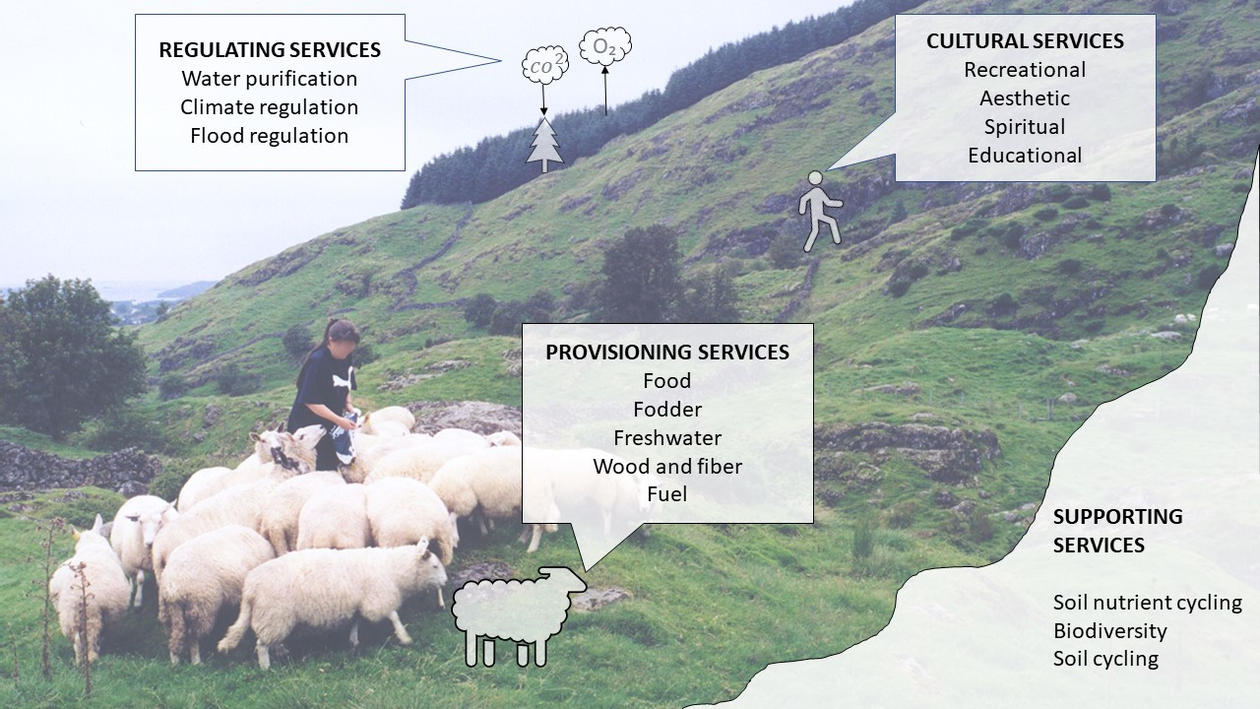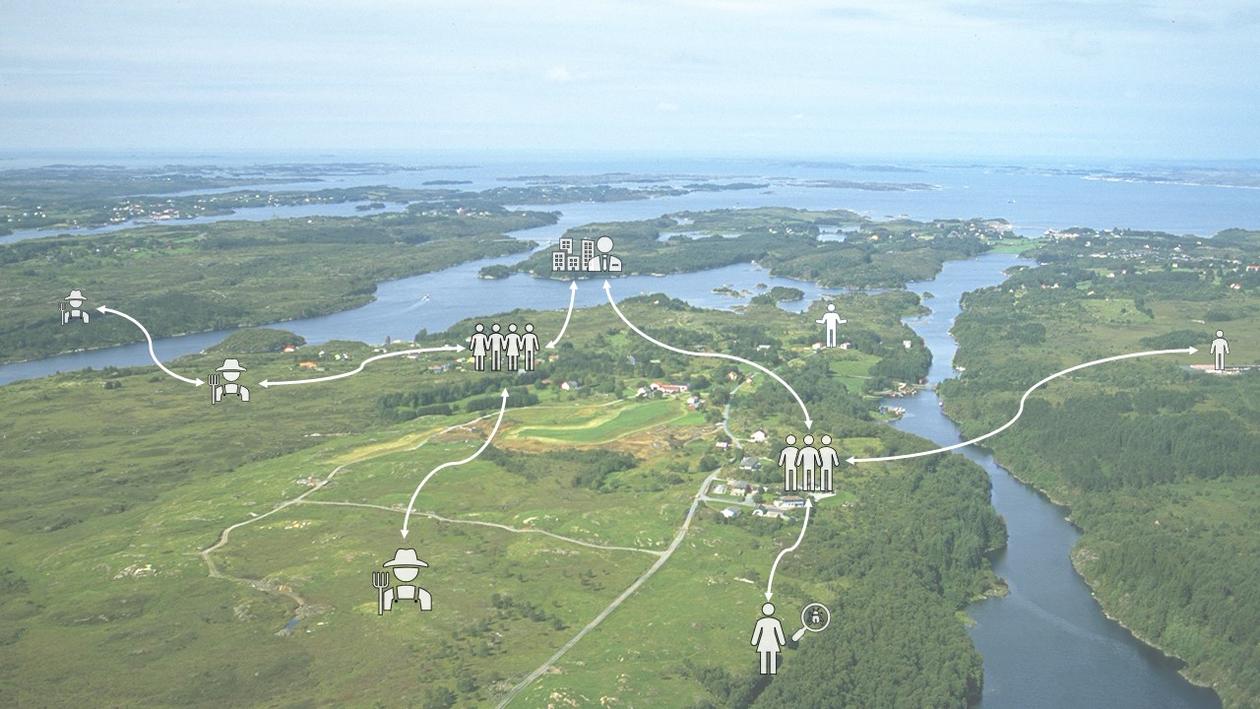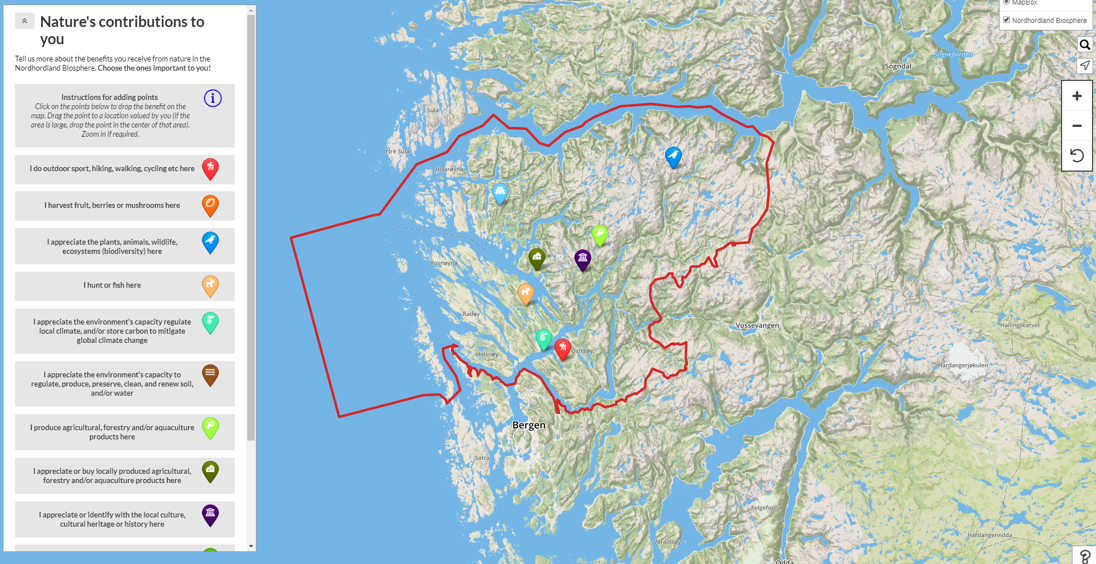Nature's Contributions to Nordhordland Biosphere
Nature’s Contributions to Nordhordland Biosphere is about understanding what benefits people receive from nature (nature’s contributions to people or ecosystem services) in Nordhordland Biosphere Reserve, Norway’s first UNESCO biosphere reserve. We are interested in knowing where these contributions are, how people value them, and how people who live and work in the area collaborate to manage these benefits.

Main content
One of the overarching aims of our project is to understand the connection between different land uses and ecosystem service provision in the region. Two main questions we hope to answer are:
- What are the ecosystem services valued by people in the region and where are they? Does the demand for these services match supply?
- How do people and organisations coordinate and communicate the use, provision and management of ecosystem services associated with different land uses in the region?
What are Nature’s Contributions to People?
Nature forms the mesh which supports and sustains all of life. Nature contributes to our lives with the food we eat, the water we drink and the wood we use to build or warm our houses. Ecosystems around us protect us from landslides or flooding, or ensure our crops are pollinated, improving the chance of a good harvest. For some people, it is a place to learn from, to enjoy or a place of intrinsic value. This means that there are many different values that different people and cultures associate to our natural world, from material benefits to intangible or relational values such as belonging or identity.
In western scientific literature, the term “ecosystem services” (ES) was coined to describe all these benefits people receive from nature. The ecosystem services concept was popularised by Robert Costanza and colleagues (Costanza et al. 1997, 2017) and encompasses the broad range of contributions to human wellbeing directly or indirectly arising from the processes of natural or semi-natural ecosystems. In recent years the concept of ecosystem services has been incorporated into the larger and more inclusive umbrella term “Nature’s Contributions to People” (NCPs), as the ecosystem service concept was thought to be too narrow to capture the diverse worldviews and knowledge systems held by different stakeholders and their understanding of nature-people relationships. In our project we are using locally relevant NCP/ES based on the standardised Common International Classification of Ecosystem Services (CICES). This classification puts all the services from nature into regulating, cultural, provisioning and supporting.
Why do we ask people to tell us what they value?
Because the preferred function of a landscape depends on who you are.
Our project uses “participatory mapping” approaches, which have been shown to integrate multiple stakeholder perspectives into landscape planning. Public Participation Geographical Information Systems (PPGIS) can help highlight ecosystem benefits to people and how these are distributed in a heterogeneous way, both in a landscape and across a human community. This can help us understand how a landscape meets different needs and multiple functions of society.
Why is landscape multifunctionality important?
“Multifunctionality” can refer to how landscapes are managed to deliver multiple societal benefits and ecosystem services, a concept developed within the field of land management research. The idea of fostering landscape multifunctionality has gained traction as the pressure on land to provide multiple functions and services increases. However, although the concept of multifunctionality is the basis of much of the EUs agricultural land-use policy, the theoretical framework for measuring and evaluating multifunctionality is still being understood. For any multifunctional landscape, ecosystem services and functions interact with each other, creating trade-offs and synergies between the different functions of the landscape. Therefore, landscape multifunctionality is a “normative concept”, meaning that different functions are often associated with different interest groups and stakeholders, because not all benefits are of the same value to everyone. A forest, for example, has economic value for the owner in terms of timber or firewood, climate-change mitigation value to the global society as it stores CO2, recreational and health values to the local community, it provides habitats for pollinators that may be important for nearby fruit farmers, and it contains multiple species that may all have conservation value. Understanding how to manage and optimise multifunctional landscapes for long-term multi-use is a vital field of research to guarantee a sustainable and fair use of landscapes.
What are UNESCO Biosphere Reserves?
UNESCO Biosphere Reserves (BRs) aim to be model areas for sustainable development. The UNESCO Man and Biosphere Programme combines the natural and social sciences, economics and education to improve human livelihoods and the equitable sharing of benefits, and to safeguard natural and managed ecosystems. They are meant to promote innovative approaches to economic development that are socially and culturally appropriate, and environmentally sustainable. Its World Network of Biosphere Reserves is constantly growing, and as of 2019 counts 701 sites in 124 countries all over the world, including 21 transboundary sites.
Nordhordland Biosphere is Norway’s first biosphere reserve, centrally located on the coast of western Norway comprising the coastal landscape between Bergen and Sognefjord. There are marked climate gradients along this profile from the west to the east, and from sea level to the mountaintops. In addition, geological processes over long time scales and human resource use over approximately the last 6,000 years have shaped today’s landscape. It makes the BR representative of the Western Norwegian Coast and unique in a global context.


